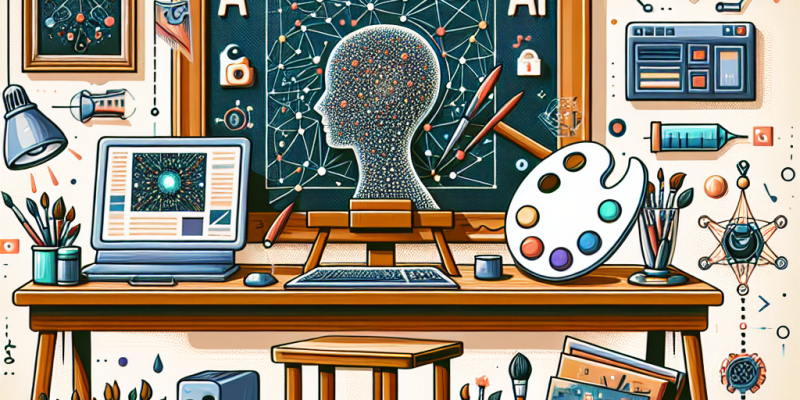AI Artists: The Rise of Generative Models in Creative Industries

In recent years, the intersection of artificial intelligence (AI) and the creative arts has blossomed into a vibrant and thought-provoking phenomenon. With advances in generative models, AI is not just assisting artists; it’s becoming a creative force in its own right. This article explores the rise of AI artists, the technology behind generative models, their impact on creative industries, and the ethical implications of this burgeoning field.
Understanding Generative Models
At the heart of AI’s creativity lies generative models—algorithms that can produce new content based on learned patterns from vast datasets. These models analyze artwork, music, literature, and other forms of creativity to generate novel outputs that mimic human creativity. Prominent examples include Generative Adversarial Networks (GANs) and transformer-based models like OpenAI’s DALL-E for images and GPT for text.
-
Generative Adversarial Networks (GANs): These models consist of two neural networks—the generator and the discriminator—that compete against each other. The generator creates new data, while the discriminator evaluates whether the data is authentic or fake. This iterative process helps the generator improve its outputs, leading to increasingly sophisticated art forms.
-
Transformers: This architecture has transformed natural language processing and is now being applied to various creative disciplines. For instance, DALL-E can generate images based on textual descriptions, illustrating the potential for cross-modal creativity.
Transformation of Creative Industries
The rise of AI artists is already reshaping creative industries, offering new tools and capabilities that challenge traditional practices:
Visual Arts
AI-generated art has captured public imagination. Programs like DALL-E and Midjourney produce striking visual pieces, some of which have been sold at auction for substantial sums. Artists increasingly collaborate with AI, using it as a tool to explore new aesthetics and concepts, rather than viewing it as mere competition.
Music
AI has also made waves in the music industry. Tools such as OpenAI’s MuseNet can compose original pieces across a variety of genres, while platforms like AIVA are designed to assist composers in creating soundtracks. This technology allows musicians to experiment with new sounds, structures, and styles, broadening the horizons of music composition.
Literature
AI-generated poetry and prose have sparked discussion about authorship and creativity. Programs can analyze vast amounts of literature, producing works that reflect different styles and genres. Services like Sudowrite assist writers by generating ideas or even entire paragraphs, paving the way for collaboration between human and AI authors.
Film and Animation
In filmmaking and animation, AI is being utilized for scriptwriting, visual effects, and even editing. AI tools are emerging that can aid in storyboarding or generating animatics, allowing creators to streamline their processes.
The Role of AI in Democratizing Art
AI’s increase in accessibility is democratizing art creation. Tools powered by generative models are often available to anyone with an internet connection, allowing aspiring artists to create without needing extensive training or resources. This opens doors for diverse voices and perspectives, contributing to a richer creative landscape.
Ethical Implications and Challenges
Despite the excitement surrounding AI artists, ethical concerns abound. Questions arise about originality, copyright, and the potential displacement of human artists. With AI-generated artworks being indistinguishable from human-created ones, issues of ownership and creative rights become murky.
Additionally, the datasets used to train these models often contain biases, which can perpetuate stereotypes or narrow perspectives in the generated outputs. Therefore, developers need to be vigilant about the data used and the potential ramifications of their models.
The Future of AI in Arts
The future of AI in the creative industries is both promising and uncertain. As technology continues to evolve, the fusion of human creativity and artificial intelligence may lead to unimaginable new art forms and expressions. Collaborative projects where human artists and AI co-create could redefine authorship and challenge existing paradigms.
Moreover, as generative models improve, educational institutions might integrate AI tools into curricula, preparing the next generation of artists to adapt to and collaborate with AI technologies.
Conclusion
The rise of AI artists marks a significant transition in how we perceive art and creativity. Generative models are not merely tools; they represent a new frontier in artistic expression, empowering artists and challenging our understanding of creativity itself. As we navigate the challenges and ethics of this technological crossroads, we stand on the threshold of a creative revolution that promises to reshape our cultural landscape for generations to come.














